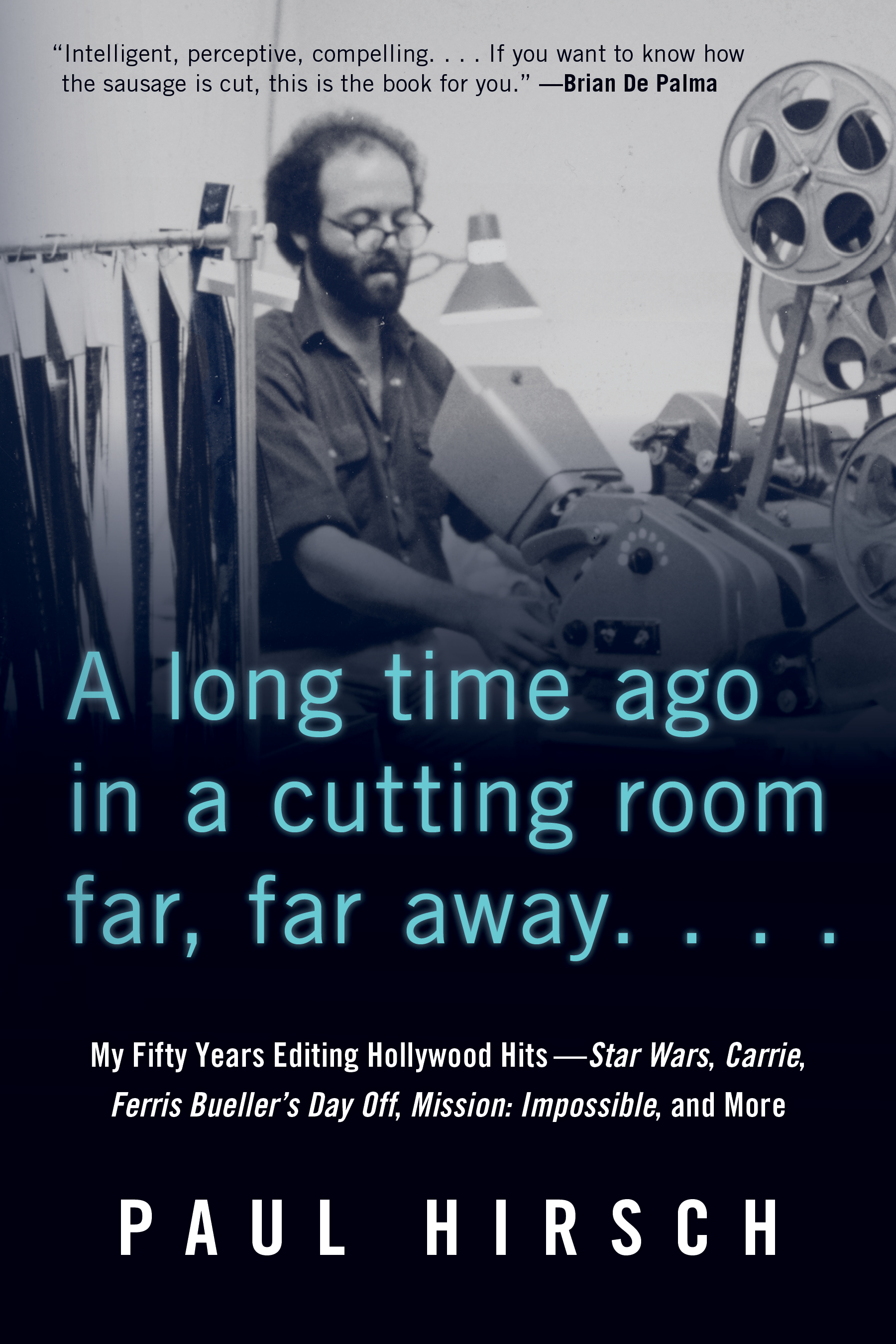A Long Time Ago in a Cutting Room Far, Far Away provides a behind-the-scenes look at some of the most influential films of the last fifty years as seen through the eyes of Oscar-winning film editor Paul Hirsch. Part film school primer, part paean to legendary filmmakers and professionals, this funny and insightful book will entertain and inform aficionados and casual moviegoers alike.
In our interview below, Paul describes his most favorite and challenging moments from filming and how the film editing process has helped him with the writing process.

You’ve worked on several incredible films—Star Wars, Carrie, Ferris Bueller’s Day Off, Mission: Impossible, and Ray, to name just a few. What are your top three favorite moments from working on those films?
1. There was a midnight screening of Sisters, directed by Brian De Palma, at Grauman’s Chinese Theater in Hollywood in 1972. I was 26 years old, it was my second feature film, and it was absolutely thrilling. The theater was packed with cinephiles, and both the screen and the audience were the biggest of my brief career.
2. We test-screened Star Wars (A New Hope) at the North Point Theater in San Francisco in 1977. The audience went wild. People were jumping out of their seats. I had never seen anything like it and I have never experienced that level of excitement in a theater again.
3. Winning the Oscar in 1978.
I could go on; I have had many thrilling moments in my career, and I can’t swear that the three I mentioned are my favorites. Many have been private, in which directors for whom I’ve been working have expressed, in their own way, their appreciation for my efforts. These have been particularly gratifying.
What film did you find to be the most challenging to edit?
There are two main factors affecting how difficult it is to edit a film. The inherent aesthetic problems are the first, and more interesting, of the two. The second has to do with the personalities of the various director, producers and studio executives for whom you are working, and the consequent political difficulties resulting therefrom. So, leaving aside the second aspect, since I believe there is no whining allowed on the yacht, the film that stands out to me is Planes, Trains & Automobiles. The first cut was 3 hours and 45 minutes long, and we had a limited amount of time to cut it down, as the release had already been announced and committed to. We had nine preview screenings in one month before we figured it out, and this was before computerized editing. The difficulties of the intellectual problems, length, tone and the ending were compounded by fatigue and the pressure of laying track in front of an approaching locomotive. However, desperation can produce inspiration, and that was the case here. We rewrote the end of the movie in the cutting room, as I describe in the book.
What’s your favorite thing about being a film editor?
There is a puzzle-like quality to the work that makes it very satisfying when you solve the problems and the film works, a quality that appeals very much to my latent compulsive obsessiveness. I have been fortunate that, to me, work is play. It is completely absorbing and I am totally unaware of time passing. I like to say that I sat down to work one day, and when I looked up, fifty years had gone by. But I think what I really like most is the feeling of being part of a team; in a few cases, luckily, a championship team.
What’s your biggest piece of advice for people looking to go into your field?
Cut anything you can get your hands on. Practice the craft as much as you can. Develop your skills. Network with people who are in the business. I often got jobs by hearing about them from other editors. Foremost, keep in mind that entry-level jobs are 1 percent aptitude and 99 percent attitude. Keep a positive mental outlook and say yes to everything without pausing to think about it.
How has working as a film editor helped your writing process?
It turns out that writing a book is similar to making a movie in many ways, after the first draft. It’s all in the editing. You start by reading the whole thing and realizing that it’s too long. Then you begin the laborious process of identifying and eliminating what’s superfluous and moving things around. At a certain point, other people begin to give you notes, and you incorporate those you think are of value. Rinse and repeat until you are done. The big difference is that, with the book, I am not limited to offering suggestions, I am making the decisions.
What do you hope readers will take away from reading your book?
I hope they will be entertained by the stories about the fascinating characters I met and worked with; that they will get a sense of what it was like to be a freelance editor in Hollywood over the last fifty years; what the discussions were like behind the scenes on some very famous movies, what aesthetic problems we ran up against, and how we solved them. And, if they are editors too, perhaps they will find some of what I gradually learned about cutting useful in their own careers.
What five people living/dead, fictional/real would you have over for a dinner party and why?
Beethoven, because he is my favorite composer.
Michelangelo, because of his genius.
Teddy Roosevelt, because he was so extraordinarily charismatic.
My parents, because I miss them.
No Comments
No comments yet.